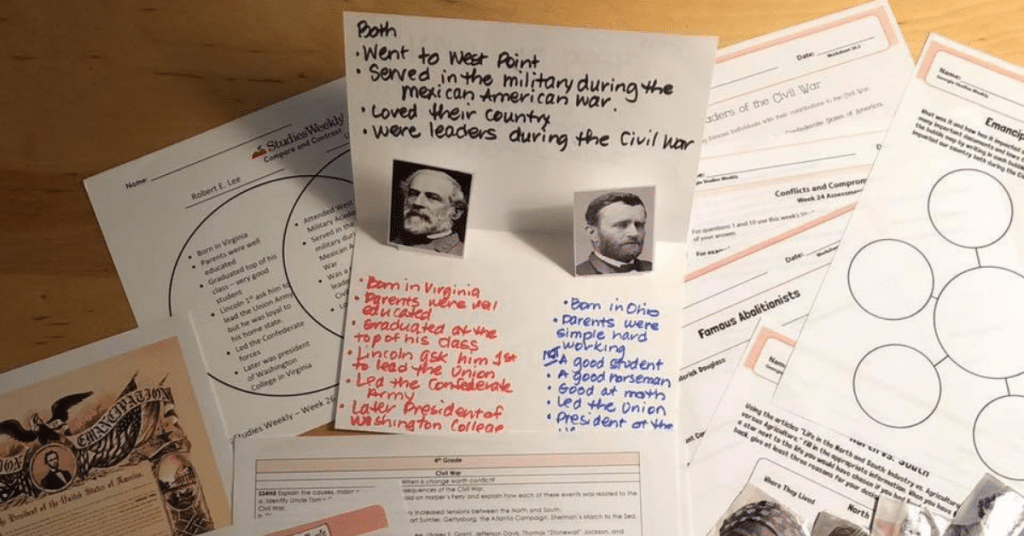Thinking on Education: Using an Integrated Learning Approach
One of the most exciting ways to teach is through an integrated learning approach.
Integrated learning pedagogy has been around for decades, but it is especially appropriate for today’s students, who need essential skills to analyze and apply learning from diverse perspectives to real-world problems. And social studies and science are excellent subjects to act as the foundation for an integrated learning curriculum.
At its very basic, integrated learning is about connections, according to Susan Drake and Rebecca Burns in Meeting Standards Through Integrated Curriculum. While there are various categories of integrated learning — multidisciplinary integration, digital integration, etc. — in elementary schools, many educators connect and approach their curriculum thematically.
Theresa Simpson, an Indiana elementary teacher, uses integrated thematic Social Studies Centers in her early-grade classes. As she explained in her 2016 Social Studies and the Young Learner article with Heather Hagan, her students work in learning centers. As they do so, they use literacy skills as tools to better understand the social studies content.
She starts with choosing a standard, theme, or historical concept, then creates the learning centers around them, using this general framework:
Center 1: Read and Comprehend
In this center, students read an informational text, then identify and summarize the main idea of the passage.
When using Studies Weekly, teachers or students can cut out an article from the print publication, glue it into their interactive notebooks, and complete their summary there.
Center 2: Making Connections
This center focuses on an activity that helps students relate the content to their own lives and experiences, or the local community.
For example, in one of her units, Simpson’s students compared their household responsibilities to those of children from a local Native American tribe. In another, as the students learned about Hank Aaron and baseball league integration, during this center, they mapped out local minor league baseball teams.
Many of the activities found on the last page of a student’s Studies Weekly publication could also be completed here.
Center 3: Organizing
In this center, students complete a graphic organizer about the theme, content, or learning concept.
The Studies Weekly Teacher Edition includes multiple graphic organizers and printables to copy and distribute. These are great to include and complete in students’ interactive notebooks at this center.
Center 4: Interactive Activity
Here, “students have a chance to experience the content through a different approach, and teachers should consider incorporating the interests and skills of their students in fresh ways,” Simpson and Hagan explained in their article.
For example, with a Hank Aaron unit, Simpson’s students created a baseball card with Aaron’s picture, his stats, and three interesting facts they found from learning about him.
Center 5: Vocabulary
The final center focuses on vocabulary. Simpson explained teachers may design a variety of ways to learn or practice vocabulary for this center, such as: asking students to illustrate words, research them in a dictionary, etc.
Studies Weekly student editions and the Teacher Edition include multiple vocabulary strategies that would fit well in this center.
Simpson and Hagan cautioned that educators must teach students the procedures and expectations for center tasks before fully implementing this approach. But once students understand how to use the centers, their learning takes off. Plus, these centers can be done individually or with small groups, and allow for learner differentiation while teaching necessary skills.
Again, structuring learning centers this way supports interactive learning across different subjects and learning styles. This allows students to approach the same topic or theme from multiple pathways and see how it all connects and intersects.
“The brain learns best in real-life, immersion-style multi-path learning,” said Eric Jensen in his book, Brain-Based Learning. “[F]ragmented, piecemeal presenting can forever kill the joy and love of learning.”
But using a center framework is just one of many ways to integrate learning in the elementary classroom.
Using a historic event or issue, teachers can design entire units that integrate literacy, math, science, and the arts into instruction. Teachers can also create a thematic unit around a question from science and then merge literacy, math, history, and the arts into students’ learning.
Because integrated learning is so powerful, Studies Weekly’s product teams are incorporating this approach into all of our curricula moving forward — folding ELA, math, science, and the arts into every unit.
